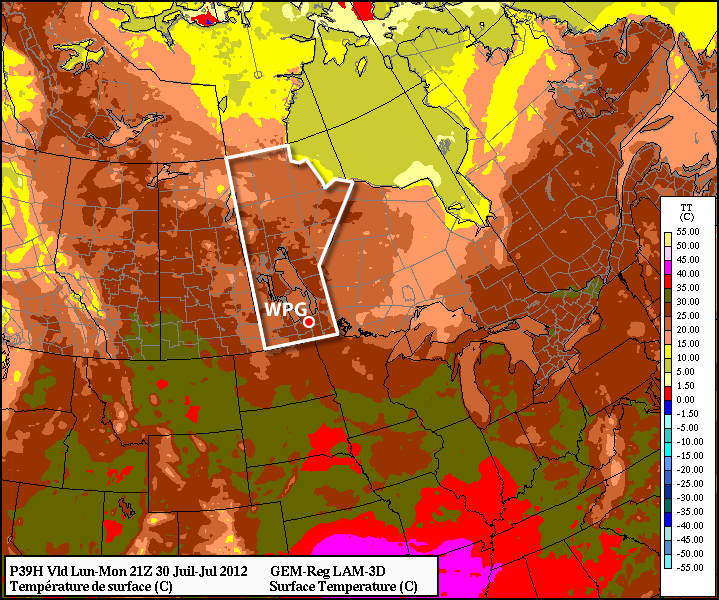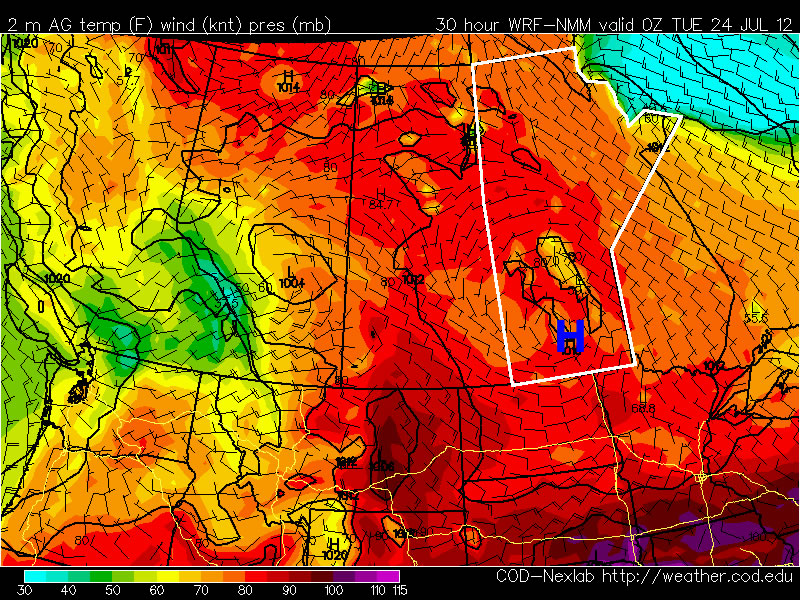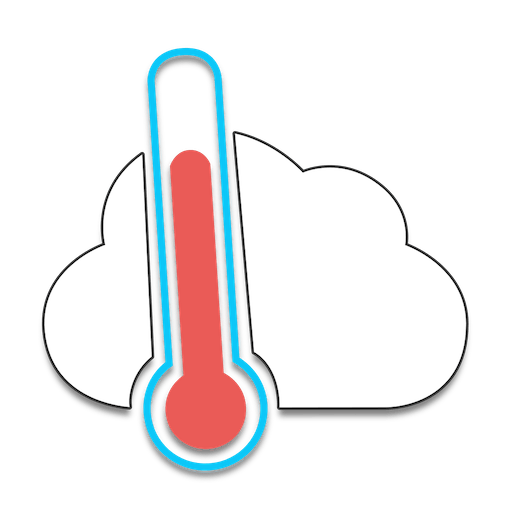The risk for thunderstorms returns to the Red River Valley today as a cold front with a history of producing severe weather pushes into the region.

850mb Analysis from the GFS model for mid-morning today.
We’ll see some clouds/light showers clearing out early this morning across the Red River Valley, leaving us in sunshine for the latter half of the morning and early afternoon. By early afternoon, a cold front will be draped N-S over the western RRV. With temperatures climbing into mid-to-high 20’s by mid-afternoon, there should be enough heat and moisture to get storms going along the cold front. It’s likely, but not certain, that some thunderstorms will deveop on a north south line from near Winnipeg south towards the International Border. These storms will track eastwards across the RRV through the mid-to-late afternoon.
They will certainly have the potential to be severe. This cold front has a history of producing storms capable of damaging winds, large hail, and isolated tornadoes. For us, conditions don’t look quite as favorable as they did yesterday in SK or the day before in AB. We’ll be looking at:
- 1000-2000 J/kg of CAPE
- LI values near -7
- Bulk shear values of only 20-35kt
- 0-3km EHI values only 1-1.5
Wind shear will be the biggest limiter to storm development today. Storms may struggle to develop a distinguished structure, which could result in a relatively tame outcome. There’s just enough support to not be able to rule a severe storm out, however, and I expect we’ll likely see some watches issued for the RRV midday. The main threats for these storms will be heavy downpours with rapid rainfall accumulation and large hail. There’s a secondary threat of strong winds and, while tornadoes cannot be ruled out, the threat for the RRV is nowhere near the threat yesterday in Saskatchewan. Ultimately, though, the chance for seeing storms depends highly on the speed of the cold front; we’ll have to wait and see how quickly it moves into the RRV today to refine the thunderstorm forecast.
Things should clear out in the evening before a chance for showers returns late overnight and Thursday morning as the main upper low tracks over the RRV. We’ll see a mix of sun and cloud on Thursday with a high near 25°C. Friday heading into the weekend looks fairly nice. Sunshine should dominate and temperatures will climb back into the high 20’s or low 30’s. We’re certainly shaping up for another above-average month for temperatures. If July’s mean temperature is above normal, it will be the 13th consecutive month with above-normal temperatures in Winnipeg.




